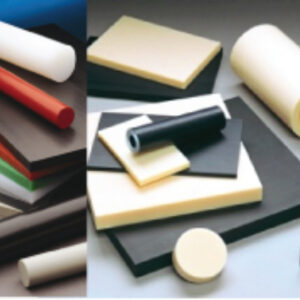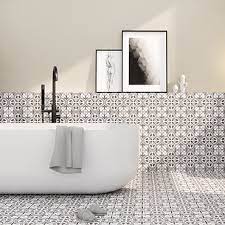Tufting machines are becoming increasingly popular in the textile industry, as they allow for faster and more efficient production of materials. They are versatile tools that can be used to make a wide range of products, including rugs, carpets, mats and even upholstered furniture. In this article we will explore what a tufting machine is, what it is good for and why it is such an important tool in the modern textile industry.
What is a tufting machine?
A tufting machine is a type of textile machinery used to create carpets and rugs. The process involves inserting yarns through a primary backing material, creating loops that are then cut to create the pile or surface of the carpet. The tufting machine uses needles to insert the yarns, which can be made from various materials such as wool, nylon, or polyester.
Tufting machines are popular in the carpet manufacturing industry because they allow for quick and efficient production of carpets with varying patterns and designs. They can also produce carpets with different pile heights and densities according to the desired specifications needed for commercial or residential use. Tufted carpets are known for their durability and strength making them ideal for high traffic areas.

In recent years, technology has advanced significantly in tufting machines leading to more sophisticated machines that can perform multiple functions at once including dyeing, weaving, and printing capabilities. These advancements have allowed manufacturers to produce carpets with intricate designs quickly while maintaining quality standards making it an excellent investment for those looking into starting a carpet manufacturing business.
Applications of Tufting Machines: Carpets, Upholstery, etc.
Tufting machines are versatile and efficient tools used to create a wide range of textile products, including carpets and upholstery. With the ability to produce high-quality, precision patterns at a rapid rate, tufting machines have become increasingly popular among manufacturers looking to increase production speed and efficiency.
One of the most common applications for tufting machines is in the production of carpets. By using different yarns, colors and textures, tufted carpets can be created with unique designs that cater to individual tastes. Tufted carpets are also known for their durability as they feature tightly packed loops that hold up well over time.
In addition to carpet manufacturing, upholstered furniture is another application of tufting machines. This process involves creating a pattern on fabric by stitching through layers of padding or foam material attached to an underlying frame. The resulting product is both comfortable and elegant with a tailored look that can stand the test of time. Overall, it’s clear that tufting machines offer endless possibilities for manufacturers looking to create functional yet stylish textiles for various applications.
Benefits of Using Tufting Machines

Tufting machines are excellent tools for textile manufacturing. They offer a range of benefits that make them indispensable in the industry. Firstly, they aid in producing high-quality fabrics that are durable and long-lasting. With these machines, it is possible to create intricate designs and patterns on fabrics that would be difficult or impossible to achieve manually.
Secondly, tufting machines are highly efficient and can produce large volumes of fabric in a short period. This makes them ideal for mass production where time is of the essence. The speed at which these machines operate also helps to reduce manufacturing costs, making them an economical choice for businesses looking to scale their operations.
Lastly, tufting machines offer excellent precision and accuracy when creating textiles. The use of computerized technology ensures that each stitch is uniform, resulting in a flawless finish every time. This level of consistency not only enhances the overall aesthetic appeal but also minimizes wastage as there is little room for error when using tufting machines.
Different Types of Tufting Machines
Tufting machines are widely used in textile manufacturing and upholstery industries. These machines are designed to create different types of patterns and designs on fabrics by creating tufts or loops of yarns or threads. There are several types of tufting machines available in the market, each with its unique features, capabilities, and applications.
Cut pile tufting machine is one of the most popular types that cut the loops created by the needles to create a plush surface. This type is commonly used for creating carpets, rugs, and other flooring products. Another type is loop pile tufting machine that creates uncut loops on fabrics for textured surfaces like bath mats and upholstery fabric.
Additionally, there is also high-low loop pile tufting machine which produces a combination of cut and uncut loops for enhanced texture variations. Tufting machines play a significant role in enhancing product quality while increasing production efficiency in various industries. Understanding their capabilities can help manufacturers choose the right machine for their specific needs.
Maintenance and Care for Tufting Machines
Tufting machines are commonly used in the textile industry to make carpets, rugs, and upholstery. These machines have several moving parts that require regular maintenance and care to function properly. One of the essential steps in maintaining tufting machines is cleaning them thoroughly after each use. The cleaning process involves vacuuming out any dirt or debris that may have accumulated inside the machine.
Apart from regular cleaning, it’s also crucial to lubricate the moving parts of a tufting machine regularly. Lubrication helps reduce friction between parts, which can cause wear and tear over time. A well-lubricated machine also operates smoothly and quietly, making it easier to detect any unusual sounds or vibrations that may signal a problem.
Finally, replacing worn-out or damaged parts as soon as possible is crucial in ensuring optimal performance for a tufting machine. Worn-out or damaged parts can affect the quality of output produced by the machine and increase its downtime due to frequent breakdowns. To avoid such scenarios, it’s advisable to maintain an inventory of spare parts for quick replacement when necessary.
Power Requirements for Tufting Machines
A tufting machine is an essential tool for the textile industry. It is designed to produce carpets, rugs, and other floor coverings with a wide range of designs and colors. These machines are powered by electricity, either directly from the power grid or through a generator. The electrical power needed for tufting machines depends on various factors such as the size of the machine, the number of needles used, and the type of fabric being processed.
The power requirements for tufting machines can range from 3-phase 220 volts to 3-phase 480 volts depending on their size and complexity. For smaller machines like handheld models or portable units, a single phase electrical supply may suffice. However, larger industrial-grade models require higher voltage supplies to drive their motors properly. Additionally, some tufting machines come equipped with a variety of features that may increase their overall electricity consumption.
In summary, it is important to understand your tufting machine’s specific electrical requirements before purchasing or using one in your facility. Electrical considerations should be made based on its intended use and environment as well as its physical attributes and features to ensure optimal performance and safety during operation.
Cost Considerations for Tufting Machines
A tufting machine is a specialized industrial equipment that creates loop or cut pile carpets, rugs, and other textile products. It works by inserting hundreds of needles through a fabric backing and then pulling yarns through the loops formed by the needles. The resulting carpet can be made in different patterns, colors, and textures depending on the type of needle used and the way the yarns are inserted.
When considering investing in a tufting machine for your business, it’s important to take into account several cost factors. First is the initial purchase price which can range from tens of thousands to millions of dollars depending on its features and capacity. Second is maintenance cost which includes regular cleaning, lubrication, replacement parts, and repairs when necessary. Third is energy consumption which can vary depending on the size and power requirements of the machine.
Other hidden costs include training expenses for operators who need to learn how to use the tufting machine safely and efficiently; transportation costs if you need to ship it from another location; installation fees if you need professional help setting it up; insurance premiums in case of accidents or damages caused by the machine; and lost productivity due to downtime caused by maintenance or repairs. Therefore before deciding whether purchasing a tufting machine makes sense for your business financially speaking make sure all these aspects have been taken into consideration so that you know what you’re getting into beforehand.
In conclusion, investing in a tufting machine can bring numerous benefits to your business. Tufting machines are designed to produce high-quality carpets and rugs with consistent quality, saving time and labor costs. By automating the carpet-making process, it eliminates the need for manual stitching or weaving, making it possible to create complex designs with speed and precision.
Another advantage of using a tufting machine is that it reduces material waste as it enables you to control the amount of yarn used per square inch. It also allows you to experiment with different textures, colors, and patterns without worrying about excessive costs or production delays. Additionally, tufting machines have low maintenance requirements as they are built with durable materials that can withstand continuous use.
Overall, investing in a high-quality tufting machine is an excellent choice for businesses looking to increase their manufacturing capabilities while maintaining quality standards. With its ability to automate large-scale production processes while creating stunning designs at a lower cost than traditional methods, tufting machines provide unbeatable value in today’s competitive market.





